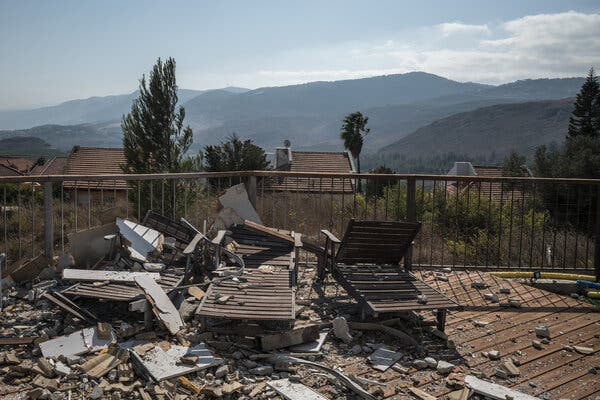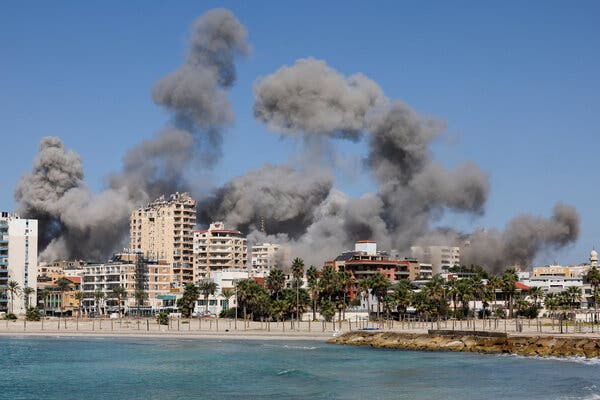
It is now well known that younger officers in the Pakistani army are no longer members of the Scotch-swilling elite. To understand the growing radicalization in Pakistan, it is instructive to read Nadeem F. Paracha, a noted columnist in Dawn, Pakistan’s most reputed newspaper.
In 2013, he wrote a tour de force about alcohol in his country. Pakistanis, especially in Punjab and Sindh, might have a love for the bottle, but they have to pay obeisance to hardline clerics who have now defined the state. Instead of Scotch, army messes now serve Rooh Afza, a sugary syrup popular across the Indian subcontinent.
China’s Policy of Illusory Security Is Destined to Fail in Afghanistan
READ MORE
More importantly, the Pakistani army has created a Frankenstein’s monster that is increasingly out of control. In 2013, the Small Wars Journal identified the growing Islamization of the army as a security threat for the United States. Starting with the first Indo-Pakistani War of 1947-48, Pakistan used militant Islamists to mobilize Pashtun tribesmen against Kashmir.
This began the patron-client relationship between the Pakistani army and militant Islamists that has become deeper with time. The journal correctly predicted that the army “would again support a Taliban takeover of Kabul,” the Afghan capital. Once Kabul fell, the journal took the view that “Afghanistan and Pakistan [would] again become places that jihadis [could] freely roam.”
The Bloody Past of Jihad
My family has vivid memories of the first Pakistan-supported Pashtun jihad in 1947 in Kashmir. My great-grandfather was the first Kashmiri Pandit killed in the town of Varahamula, now known as Baramulla. The Pashtuns tied his dead body to a horse and dragged it through the streets to terrorize the local population into submission.
Embed from Getty Images
It was not only Pandits who suffered at the hands of the tribesmen. Fellow Muslim Kashmiris and even Europeans were subjected to murder, robbery and rape. In a haunting account, noted British journalist Andrew Whitehead has documented the massacre at St. Joseph’s Mission in Baramulla during that invasion.
After 1948, members of my community suffered from growing Islamization in Kashmir aided and abetted by Pakistan and eventually became victims of jihadi ethnic cleansing in January 1990. The indigenous Kashmiri Pandits had to flee their homeland to the plains of India after millennia of continuous habitation in the beautiful Himalayan valley. They have now become refugees in their own country and have yet to get justice, reparation or rehabilitation.
Like Kashmiri Pandits, Afghans have also had to flee their ancestral lands. This trend kicked off when the Soviets moved into Afghanistan in 1979. In June 1985, National Geographic published the photograph of Sharbat Gula, a 12-year-old-refugee from Afghanistan. Her haunting green eyes aroused the compassion of the world. Once described as the Third World’s Mona Lisa, Gula did not go on to have an easy life. In 2016, she was arrested “for using a forged Pakistani identity card—a common practice among the 1 million Afghan refugees who live in the country without legal status.”
If Gula provided the striking image for Afghanistan during the endgame of the Cold War, the photograph of Taliban fighters standing in front of the iconic painting of Ahmad Khan Abdali with their weapons in full view defines the new era unveiling before our eyes. In that painting, a Sufi saint anoints Abdali as the shah of Afghanistan by touching his forehead with a chaff of wheat. Culturally, the authority and legitimacy of Ahmad Shah Durrani, the founder of the Durrani dynasty, the last of the Afghan empires, came from a Sufi saint.
Today, the Islamic Emirate of Afghanistan has seized power through the barrel of the gun. The Sufi chaff of wheat be damned. With the Taliban’s takeover of Afghanistan, death and devastation will stalk the land, leaving little alternative for the likes of Gula to flee for their lives despite grim prospects across the border.
In contrast to the divinely ordained shah, an emir is “a military commander, governor of a province, or a high military official.” The fact that the Taliban have proclaimed Afghanistan to be an emirate demonstrates their nakedly militaristic worldview. Their authority and legitimacy derive from unabated conquest. The Taliban is running a fundamentally anachronistic anti-democratic regime with little regard to the rights of women or minorities, whether ethnic or religious.
The Dangerous Role of Pakistan
The victory of the Taliban is a great boost for Pakistan, a state that has used terror as an instrument of state policy for decades on both its eastern and western fronts. In the early 1990s, some members of the Afghan mujahideen who had fought the Soviets and younger Pashtun tribesmen who studied in Pakistani madrassas came together to found the Taliban. From the early days, Pakistan’s Inter-Services Intelligence (ISI) played a key role in their spectacular success.
In November 1994, the Taliban captured Kandahar and, in September 1996, its fighters seized Kabul. Burhanuddin Rabbani, the Tajik president at the time, fled for his life. Later in 1996, the Taliban declared Afghanistan an Islamic emirate. This time around, they are better trained and better equipped than in the past. They have announced that executions and amputations will be back. The Taliban have hung bodies in public squares of the historic city of Herat, a little over 120 kilometers from Iran. The Taliban are unleashing a reign of terror in Afghanistan thanks both to the ruthlessness of their fighters and the backing of Pakistan. Intelligence officials from many countries have said that Pakistan has deployed ISI agents, special forces and Chinese-built drones in Panjshir Valley.
Pakistan’s current reputation as the world’s global breeding ground for jihad is a result of disastrous decisions by both populist and fanatical leaders. In 1974, Zulfiqar Ali Bhutto brought in a constitutional amendment that declared the Ahmadiyya community to be non-Muslim. In another 2013 piece, Paracha identified this act “as the starting point of what began to mutate into a sectarian and religious monstrosity in the next three decades.”
General Muhammad Zia-ul-Haq ousted Bhutto through a military coup and had him hanged on the gallows. The general’s first move as the army chief was to change Muhammad Ali Jinnah’s original army motto from “Unity, Faith, and Discipline” to “Faith, Piety, and Jihad for the sake of Allah,” a change that has come to define the army today. With more religious lower-middle-class young men joining the officer class, there is not even a hairline separation between elements of the Taliban and the Pakistani army. The Taliban-controlled Afghanistan will not just be Pakistan’s strategic depth but instead its sword arm.
The Taliban inspire not only Pakistanis but also many Indian Muslims. They are Deobandi, a Sunni Islamic revivalist movement that was founded in 1866, eight years after the bloody 1857-58 Indian rebellion that shook the British Empire to its core. In 1858, the indirect rule of the British East India Company ended. The Mughal Empire was formally dissolved and the Crown took over. Many Muslims regarded the end of Mughal rule as a catastrophe and some charismatic preachers began the Darul Uloom Islamic seminary in Deoband, a town in the northwestern region of India’s most populous state of Uttar Pradesh close to Delhi.
Embed from Getty Images
In a recent feature article, American journalist Lauren Frayer of the National Public Radio covers the roots of the Taliban. She notes that Maulana Arshad Madani, the 80-year-old head of Deoband’s Darul Uloom, expressed admiration for the Taliban kicking out the Americans from Afghanistan. She quotes the cleric as saying, “I’m weak and old, but if given the chance, I would go to Afghanistan.” More worryingly, Madani has supported the Taliban policy to completely segregate men and women in educational institutions. He thinks women should wear hijab and not participate in sports. Madani has also warned of another partition if the Hindu right tampers with Indian secularism.
Like Madani, many Pakistanis are inspired by the victory of the Taliban and some see it as a divine sign of God’s will. Religious extremists are already demanding greater Islamization and the imposition of sharia. Already, Pakistani Prime Minister Imran Khan has capitulated to the mullahs, abandoning the domestic violence and forced conversion bills. Hardline clerics argue that these bills contradict Islamic teachings. Given such a zeitgeist, it is little surprise that many analysts predict that terrorist attacks will increase.
India fears increased infiltration by Pakistan of Taliban Pashtuns into Kashmir and yet another cycle of violence. What is emboldening the Pakistanis is support from Turkey. Amalendu Misra, writing for The National Interest, argues that there is already a tacit working relationship between these two countries to establish a borderless Islamic imperium. Khan has championed the superhit Turkish action-adventure series called “Dirilis: Ertugrul” about “Muslim Oghuz Turks fighting invading Mongols, Christian Byzantines and the fanatic Knights Templar Crusaders in Anatolia (now modern-day Turkey) of the 12th century.” After turning to Saudi Arabia in the 1980s and 1990s, Pakistan is now turning to Turkey for its cultural identity.
It is also important to note that the current Pakistani government is led by a Pashtun and is far more pro-Taliban than its predecessors. This increasing radicalization of Pakistan is making intelligence officials worry about Pakistan as a potential source for nuclear proliferation. Marvin Kalb, a nonresident senior fellow at Brookings, has just written about “the agonizing problem of Pakistan’s nukes.” The specter of “jihadis taking control of a nuclear weapons arsenal” of about 200 warheads is a very real one. There is also the scenario of mid-level officers conspiring to release or sell warheads to militant groups.
For the World
The international community has been worrying about the security of nuclear facilities for over a decade. In 2008, Mohamed El Baradei, then head of the International Atomic Energy Agency, feared that “nuclear weapons could fall into the hands of an extremist group in Pakistan or in Afghanistan.” Later that year, Ken Berry, a senior analyst of the EastWest Institute, observed that an increasingly overstretched military and rising Islamic extremism was increasing the risk of Pakistani nuclear weapons falling into the wrong hands.
Over the last 75 years, the steady spread of Islamic extremism in Pakistan and then Afghanistan has left the international community confused at best and paralyzed at worst. Leaders in world capitals have ignored long-term trend lines that began with the use of Pashtun tribesmen to invade Kashmir in 1947. Now, the 20-year war on terror has ended in an ignominious American retreat even more dangerous than Vietnam, giving a shot in the arm to the likes of Madani in Pakistan, Afghanistan and India.
In the light of the debacle in Afghanistan, US senators are seeking an assessment of Pakistan’s role in Afghanistan. Some are proposing sanctions. This has caused stock market prices to fall and the Pakistani rupee to drop to a record low. Pakistan’s economic woes are expected to boost radicalization further. Vikram Sood, the former chief of India’s intelligence agency R&AW, has repeatedly warned about Pakistan becoming a center of a new global jihad. He is not alone. US General Mark Milley is worried about rising regional instability along with “the security of Pakistan and its nuclear arsenals.”
Many senior American military and intelligence officials estimate that the Taliban takeover of Afghanistan has increased risks not only to the region but also to the US. Europeans are worrying about terror threats and yet another flood of refugees. The world faces a clear, present and unprecedented danger that will only grow with time. A rogue nuclear strike would make the 9/11 attacks of 2001 look like insignificant firecrackers.
Washington’s decades-long fixation with Iran and North Korea has obscured the reality that the Taliban and Pakistan present the greatest global security threat. Therefore, the major powers and the international community must come together to contain both the Taliban and their patron Pakistan before millions of innocents lose their lives.
*[This article is the first of a three-part series analyzing the fallout of the Taliban’s takeover of Afghanistan.]
Source: fairobserver.com



